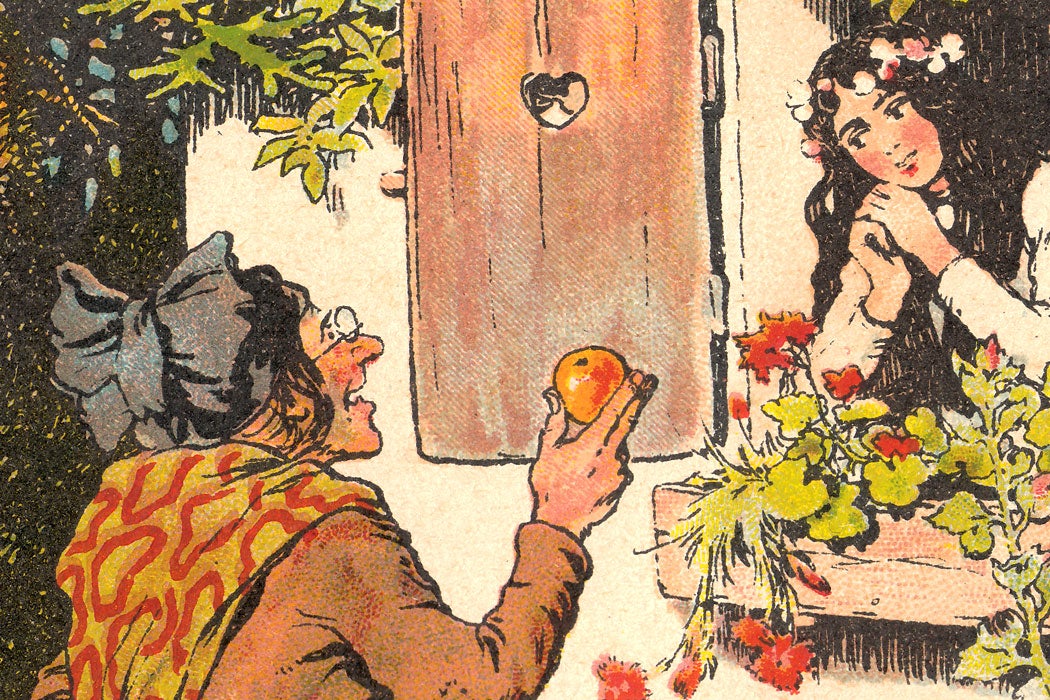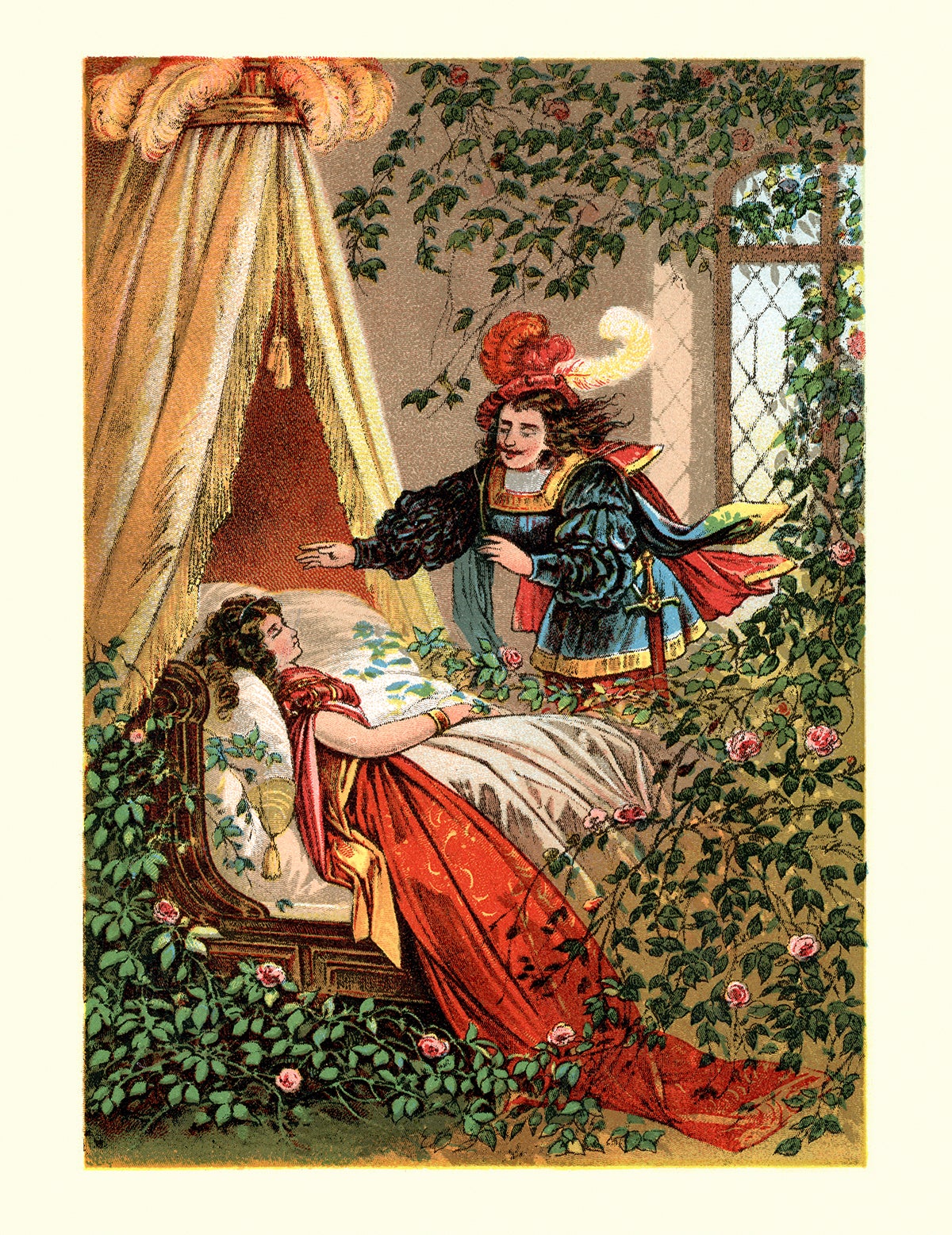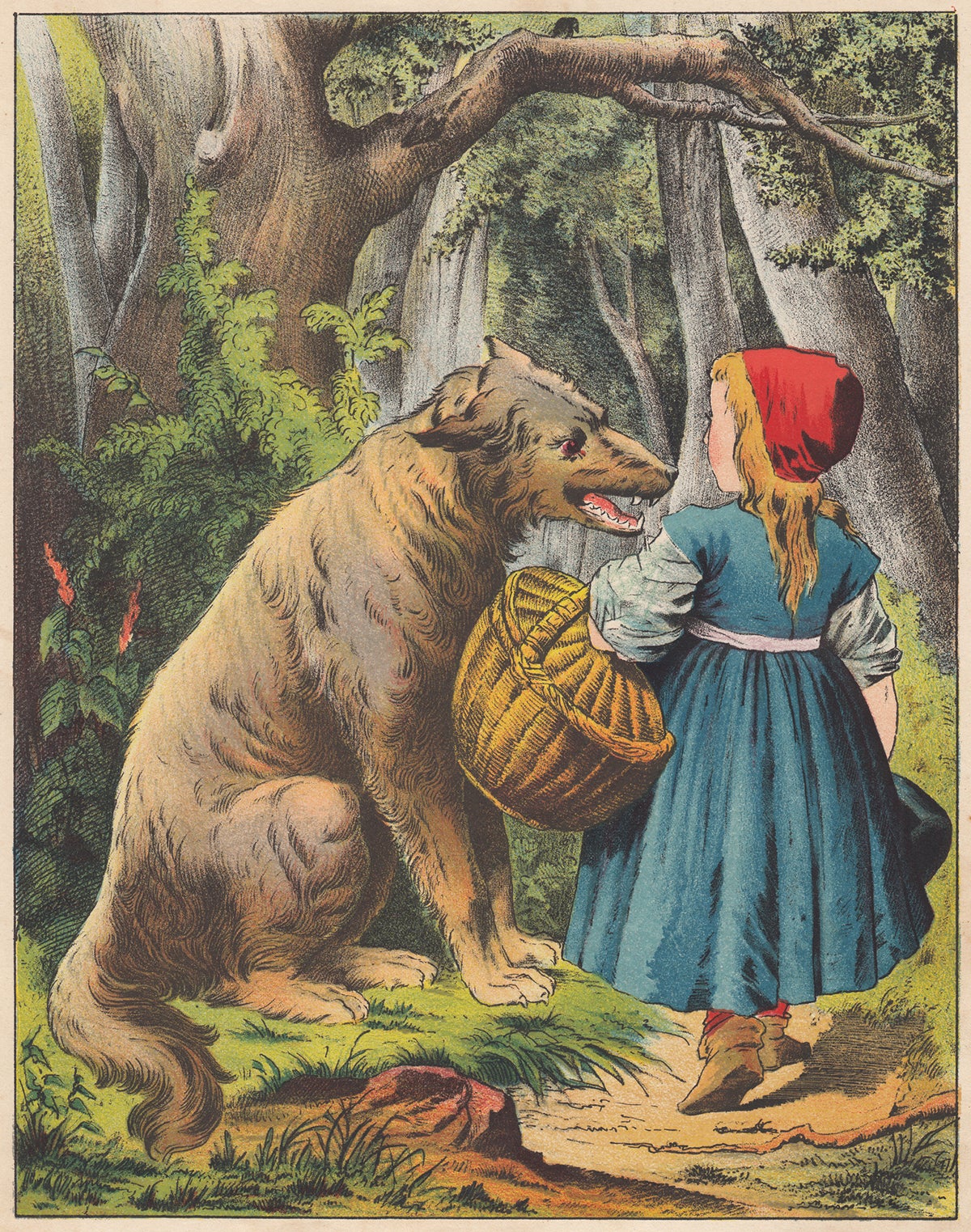Humble Beginnings
There once were two brothers from Hanau whose family had fallen on hard times. Their father had died, leaving a wife and six children utterly penniless. Their poverty was so great that the family was reduced to eating but once a day.
So it was determined that the brothers must go out into the world to seek their fortune. They soon found their way to the university in Marburg to study law, but there they could not find luck from any quarter. Though they had been the sons of a state magistrate, it was the sons of the nobility that received state aid and stipends. The poor brothers met countless humiliations and obstacles scraping by an education, far from home.
Around this time, after Jacob had to abandon his studies to support his family, the entire German kingdom of Westphalia became part of the French Empire under Napoleon Bonaparte’s conquering rule. Finding refuge in the library, the brothers spent many hours studying and searching for stories, poems, and songs that told tales of the people they had left behind. Against the rumblings of war and political upheaval, somehow the nostalgia of stories from an earlier time, of people’s lives and language, in the little villages and towns, in the fields and forest, seemed more important than ever.
This then is the strange rags-to-riches tale of two mild-mannered librarians, Jacob and Wilhelm Grimm (affectionately known as the Brothers Grimm), who went hunting for fairytales and accidentally ended up changing the course of historical linguistics and kickstarting a whole new field of scholarship in folklore.
Collecting Fairytales
The Brothers Grimm worked as librarians, which was then, as now, not exactly a lucrative career, even if you do work for the new king in the royal private library. The young, unemployed Jacob Grimm got the job after the royal secretary recommended him; they forgot to check his formal qualifications and (as Jacob suspected) no one else applied. (Wilhelm joined him as librarian soon after). As the only instruction he was given by the royal secretary was “Vous ferez mettre en grands caractares sur la porte: Bibliothbque particuliere du Roi” (“You will write in big letters on the door: the Royal Private Library”) this gave him plenty of time to do other things, like linguistics and collecting folklore. But what does language have to do with fairies?
Most people are aware that the Grimm brothers collected fairy stories, to the delight of children everywhere. For logical, rational folk, such statistically improbable stories, with their witches, fairies, princes and princesses, woodcutters, tailors, lost children, talking animals, all frolicking about the woods from May Day to the bleak midwinter, are often dismissed as sometimes strange, sometimes silly, never serious and certainly not scholarly. Why should we care about such tales?
The impetus that led the Grimms to their twin passions of language and folklore probably stems from that universal urge: the longing for home.
Even as a schoolboy, Jacob Grimm was well acquainted with how language can be used to make one feel at home, or an outsider. As the country mouse at school, one of his teachers would always address him in the third person er rather than the more respectful Sie used for all his city classmates. He never forgot it. He missed the walks to nearby villages with his father, and seeing the country folk go about their lives, from work to play, through a haze of tobacco smoke and bright sunshine, before everything changed.
At university, the Grimms luckily met the Romantic poet Clemens Brentano, who asked for their help collecting folk songs and poetry. That began directing their love of family, of homeland and heritage, towards a study of native German oral tradition. The brothers were particularly interested in stories, sorting through the cultural rubble and debris that, up until then, no one had really cared about to write down. Old wives’ tales were for old wives and children, certainly not respectable scholars, but the Grimm brothers felt an urgency to record these popular stories, “to preserve them from vanishing like the dew in the hot sun, or like fire quenched in the well, to be forever silent in the tumult of our times.”
The Napoleonic Wars made this a time of great political and social turbulence. The German-speaking realm was fractured, and many German scholars, Jacob and Wilhelm among them, were driven by nationalism to preserve a quickly disappearing German heritage. At the heart of this was the German Romantic movement, with its emotional longing for authenticity. The Romantics believed this truth could be found in the simpler words and wisdom of the common people, by hearkening back to a nostalgic, glorified past. For the Romantics, this purity was expressed in Naturpoesie or folk poetry.
As ethnologist Regina Bendix points out, it was hard for the cultural curators of Naturpoesie—the proto-hipster intellectuals of the day—to reconcile what they thought was the truest kind of poetry with the lower classes, especially the urban poor. She quotes Johann Gottfried Herder, who disdainfully said, “Folk—that is not the rabble in the streets, they never sing and compose but only scream and mutilate.”
So the good folk that created and shared this oral tradition in their own words, isolated and preserved by scholars, severed from their social context, were really idealized, imaginary folk somewhere in the misty, even medieval past, not unlike in a fairytale, full of terror and beauty that was far removed from the present day. To reach the authenticity of German folklore and language meant reaching as far back as you could to discover its essential origins.
This is what the Brothers Grimm did as they set about collecting as many tales as they could, in the vernacular, all over the country, no matter how violent, offensive, or grim. In those days, the fairytales that were fashionable in upper class social circles were written to be literary or moral teaching moments, such as the tales of Charles Perrault. The Grimm brothers thought this kind of sanitized French style to be more fakelore than folklore, with the language, artificially literary, clearly written to be read by the educated classes. Their novel approach was to include folktales as a kind of Naturpoesie, and to write them down not just for literature, but for science.
Linguistics and Grimm’s Law
What’s not so well known is that in the linguistics world, Jacob Grimm is mostly famous as the linguist for whom the eponymous Grimm’s Law is named, a fact quite apart from collecting tales as old as time. It’s also not widely known that the Grimm brothers’ sleeper hit Kinder- und Hausmärchen (Children’s and Household Tales) was initially a scientific work of scholarship on local culture, not written for children at all. As Jacob writes: “I did not write the story-book for children, although I rejoice that it is welcome to them; but I would not have worked over it with pleasure if I had not believed that it might appear and be important for poetry, mythology, and history to the most serious and elderly people as well as to myself.”
Want more stories like this one?
Instead, they were among the first to set down a rigorous methodology of the collection and research of oral tradition, in which copious notes were kept of the speakers, the places and times. Unusually, the storytellers’ very language, the dialectal and vernacular words they used, was preserved. Careful comparisons were made between different versions of tales the Grimms were told. The Grimms declared: “Our first aim in collecting these stories has been exactness and truth. We have added nothing of our own, have embellished no incident or feature of the story, but have given its substance just as we ourselves received it.”
This really was pioneering work in folkloristics. And as he compared tales, attempting to reconstruct the distant beginning of German culture, Jacob Grimm grew more interested in language. Language was a vehicle that could reach even further back to the authentic and original German past. How and why did words change from different Germanic languages or dialects to other Indo-European languages?
Though he was not the first to observe the phenomenon, it was Grimm’s linguistics research that explained the comprehensive and systematic sound correspondences between the Germanic languages and their cognates in other Indo-European languages, such as the change from voiceless stops like /p/ in the word for father in Latin and Sanskrit, as in “pater” and “pitā” to a voiceless fricative /f/ in Germanic languages, as in “father” (English) and “vater” (German). This phenomenon is now known as Grimm’s Law.
And just like that, Germanic historical linguistics was born out of a desire to understand the origins of German folktales better, and historical phonology developed as a new field of study. Jacob Grimm’s work, along with his contemporaries’, led to a more rigorous, scientific approach in historical linguistics, which ultimately led the way to modern formal linguistics as a science.
The Plot Thickens
With those great accomplishments, we could say the brothers Grimm lived happily till their end. Of course, every good story has a twist (and I don’t mean the part where the Grimm brothers, as part of the Göttingen Seven, were later exiled from their beloved homeland by the King of Hanover, causing mass student protests).
With the best of intentions, the Grimm brothers had laid out a scientific conceptual framework for folklore scholarship. But their driving passion really still was the building of a national folk literature. One imagines the two excitable librarians travelling about the countryside gathering tall tales from their country people, buttonholing them in muddy fields, in pubs and country inns, beer steins and notebooks in hand. Sadly this is apocryphal. In reality, many of their sources were either literary or gathered from eager acquaintances of their own class (some which were kept anonymous to avoid uncomfortable questions), and as a result, some were probably not even natively German.
Orrin W. Robinson’s study shows how, despite the Grimm brothers’ insistence that they recorded the language of the storytellers verbatim as they received it, the truth is these tales were edited and manipulated, particularly by Wilhelm. We can track the changes through the editions and an earlier manuscript they lent to the absent-minded Clemens Brentano, who forgot to destroy it. The Grimm brothers were able to use their considerable experience of folk tales and linguistics to massage the stories into seeming more authentically German. For example, the names Hänsel and Gretel that we know so well were simply chosen because they gave the outward appearance of a true and authentic folktale from a certain area, even though initially, the tale was known as “The Little Brother and the Little Sister.”
Though in earlier versions some tales were narrated in indirect speech, or the standard German used by the Grimms’ middle class informants, in later versions they’d acquired direct dialogue, often in regional dialects, including folk sayings and proverbs as well “authentic” folk verse and poetry. The Grimm brothers would unwittingly reveal their moral and gender biases, by switching pronouns for female characters even within a single story, such as when a transformation has occurred. Considering Jacob Grimm’s own childhood experience with pronouns, this is curious. Robinson points out that when girls are good or very young, they’re referred to by the neutral pronoun “es,” while bad girls or mature young women are referred to by the feminine “sie.” The contrast in usage makes it clear it’s not random, especially when compared to another written source of the same tale, where pronouns are used consistently.
For some, the Grimm brothers’ failure to follow their own research methods represents a disastrous loss for German folklore. But it should also be noted that by regularly editing the narrative structure, the Grimm brothers also set down the stylistic format for how we recognize a fairytale, and that format has been followed ever since. Once upon a time, despite their flaws, the brothers Grimm accomplished something legendary in building a national body of folk literature. And the legacy they left behind for historical linguistics and folkloristics has lived happily ever after.
Editor’s Note: This story was amended to add a missing hyphen.










